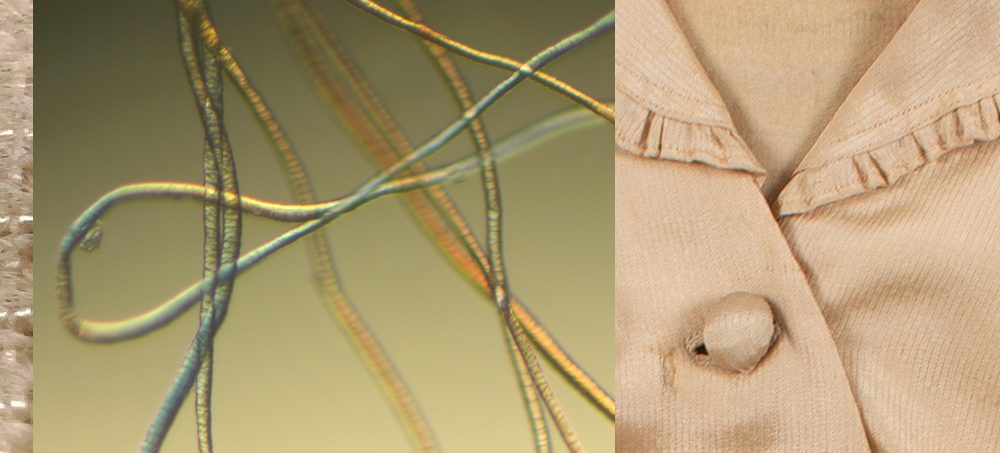A Collaborative Project with The Centre for Textile Conservation and Technical Art History, University of Glasgow
One of our original mounting team members, Charlotte Baker (nee Cameron), went on to study textile conservation, graduated from the University of Glasgow a few years ago and became a conservator at the National Army Museum. During her studies, we had the opportunity to give her an actual ‘case’ to work on in the context of her course. Our then assistant curator Barbara came across this 1910s bodice in Cosprop’s hire stock. When writing a catalogue description she was surprised by the garment’s synthetic feel. We were unsure if it was made of an early semi-synthetic fabric or not and Charlotte kindly agreed to do an analysis in her university’s laboratories. She describes her findings in this lovely article:
During semester 2 of the programme I was fortunate enough to be able to be involved with the collection again, this time undertaking material analysis of a bodice (figure 1) which was thought to possibly be an early example from their stock of the use of a semi-synthetic, also referred to as man-made fibre. The bodice, understood to date from the 1910s, with a label (figure 2) inside the collar reading “High Class Tailor Made Garments/Stagg & Mantle/Leicester Square W.C.”
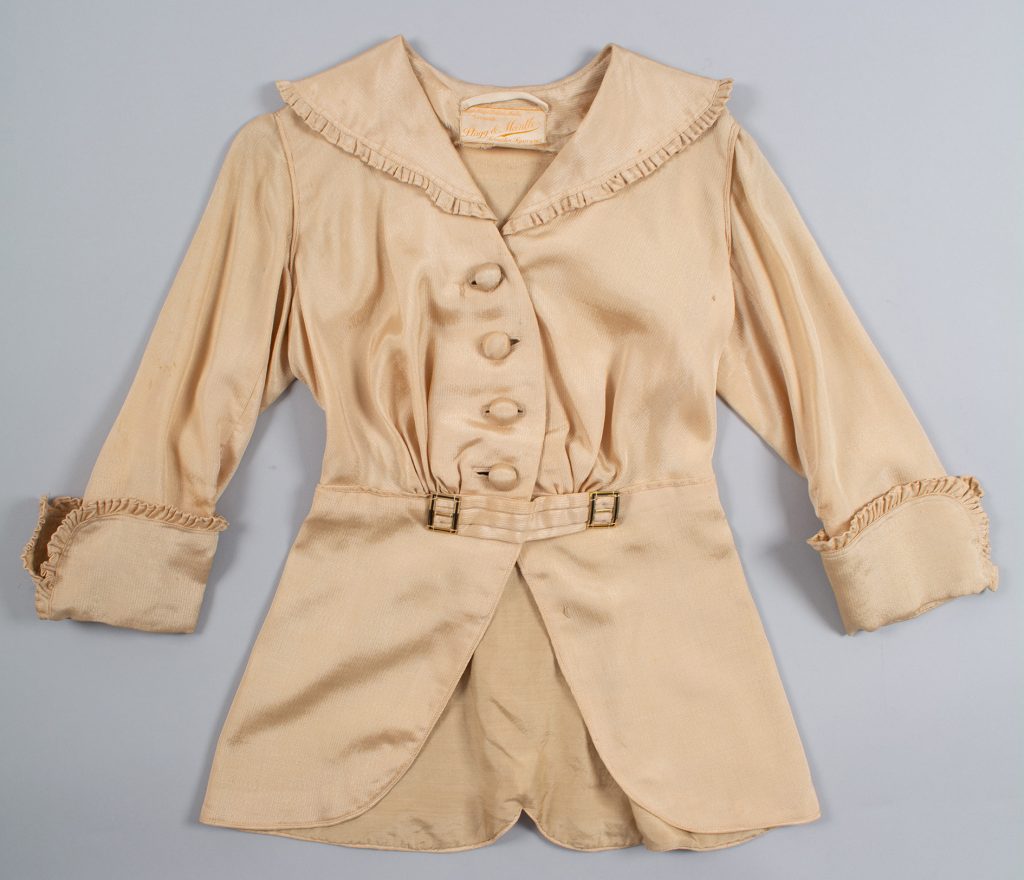
Establishing the materials present is an essential first step in any object documentation for a textile conservator and helps in determining an appropriate treatment proposal if the object requires conservation. Knowing the date of the object can assist in narrowing down the fibre possibilities. The earliest semi-synthetic fibres, viscose rayon and acetate rayon, were plant-based, derived from cellulose and made as cheaper alternatives to silk. Viscose rayon was first produced in England in 1905 by Courtauld and Co Ltd, who bought the rights to the viscose process to develop a large-scale manufacturing of the fibre.[1] Visual analysis alone can often give a good indication of the materials present; however, semi-synthetic materials can be especially difficult to identify as they were made to closely resemble silk. At the CTC we are fortunate to have equipment which can be used to assist identification. From visual analysis of the bodice it appeared that two different fibres had been used in its construction. The warp was silk-like in appearance but could have been semi-synthetic, and the weft appeared to be wool. Figure 3, an image of the fabric taken under a Dino-Lite USB microscope at x 200, illustrates the weave structure.
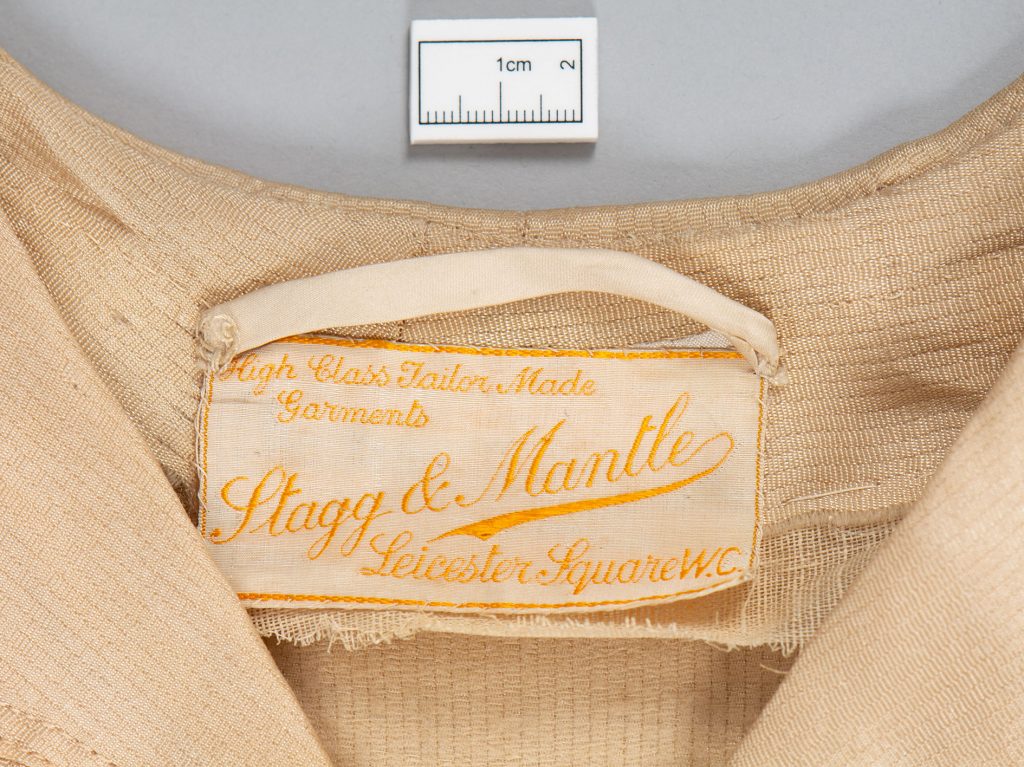
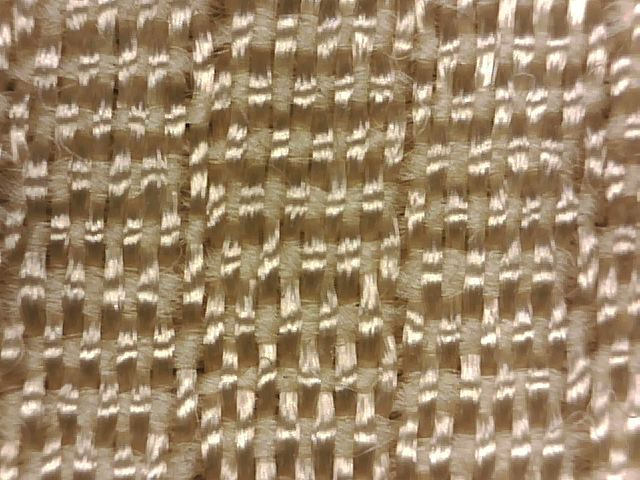
In order to provide more conclusive results, small samples approximately 2mm in length were taken from an inside seam allowance to examine the warp and weft fibres using microscopy. The samples were prepared on glass slides and examined using a Carl Zeiss Axiolab microscope at the CTC. The weft fibres were more easily identified than the warp fibres, as from a protein or animal source, most likely wool, due to the appearance of scales along the fibre (figure 5). Figure 4 shows an image of the warp fibre, with longitudinal striation or lines along its length, consistent with the appearance of other fibres such as linen and semi-synthetic fibres cellulose viscose and cellulose acetate.
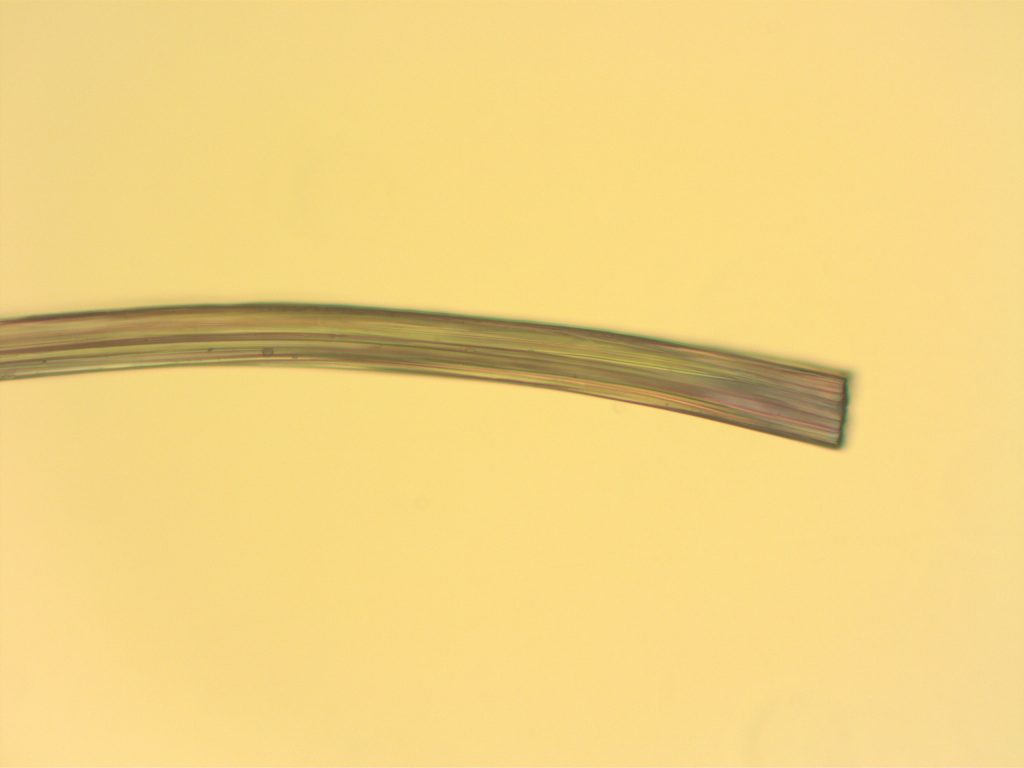

To provide the most reliable results we are fortunate at the CTC to have an analytical lab with a piece of equipment which allows us to use Fourier-transform infrared spectroscopy (FTIR). The FTIR spectrometer was used to confirm the presence of a semi-synthetic fibre in the warp fibre sample, with the advantage that the sample is not destroyed through the analysis. A small sample (2mm) was prepared and placed on the FTIR sensor and then the equipment used to collect infrared spectra showing the chemicals present. The resulting data provides IR spectra which can then be compared to the CTC’s library of authenticated reference spectra of textile fibres. In the case of the warp fibre tested it was clear to see upon viewing the IR spectra that the fibre was cellulosic and not proteinaceous as it would appear if it had been silk. Through comparison with the spectra from a viscose rayon sample in the reference collection, clear parallels can be drawn with that of the data collected from the sample, as shown in figure 6.
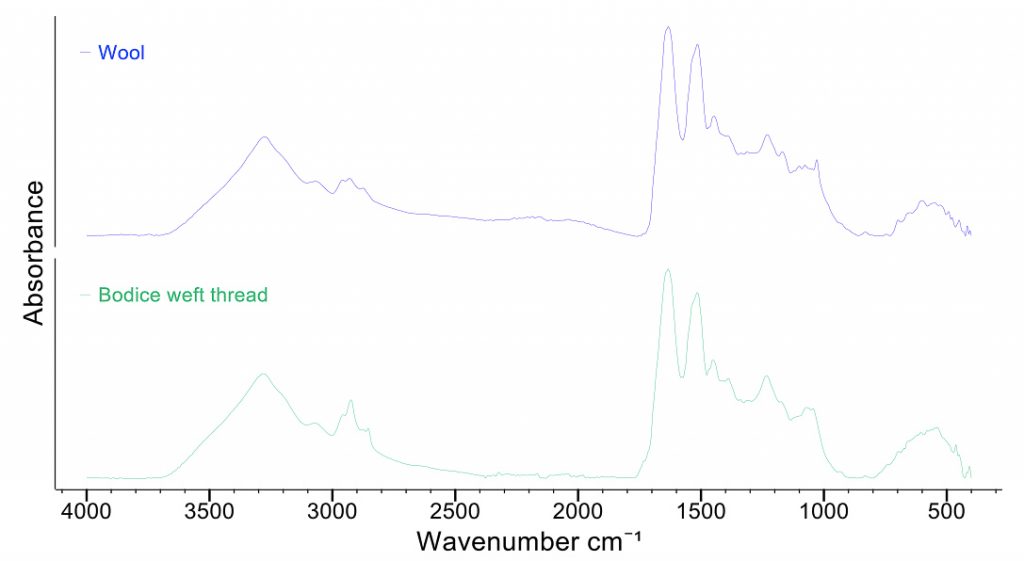
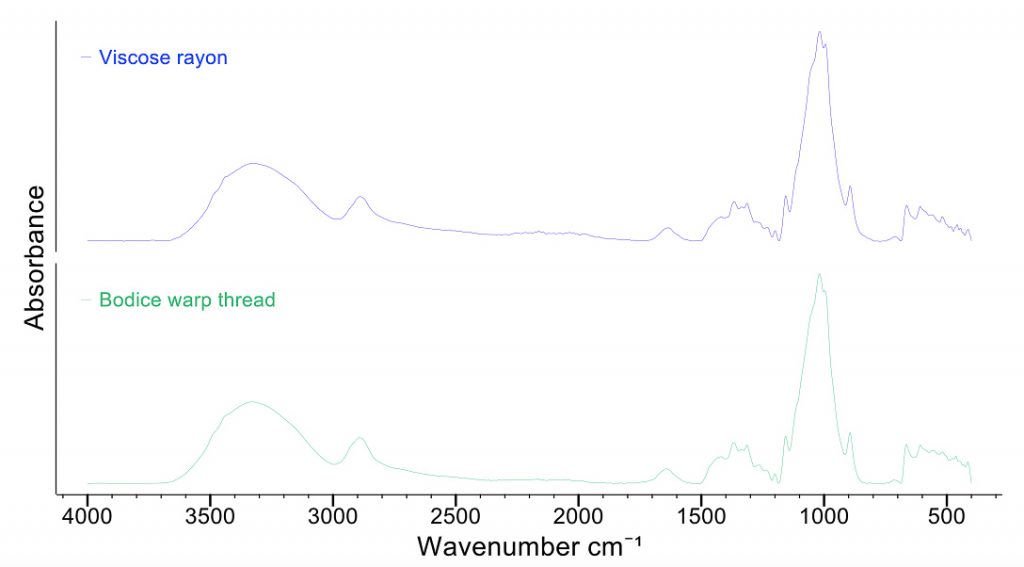
Figure 6. IR Spectra comparison with Viscose Rayon
Charlotte has published her article on the Textile Conservation course’s blog that we would like to recommend to anyone interested in their work: http://textileconservation.academicblogs.co.uk/
[1]Calvin Woodings (ed.), Regenerated Cellulosic Fibres, (Cambridge: Woodhead Publishing in association with The Textile Institute, 2001), 8.

